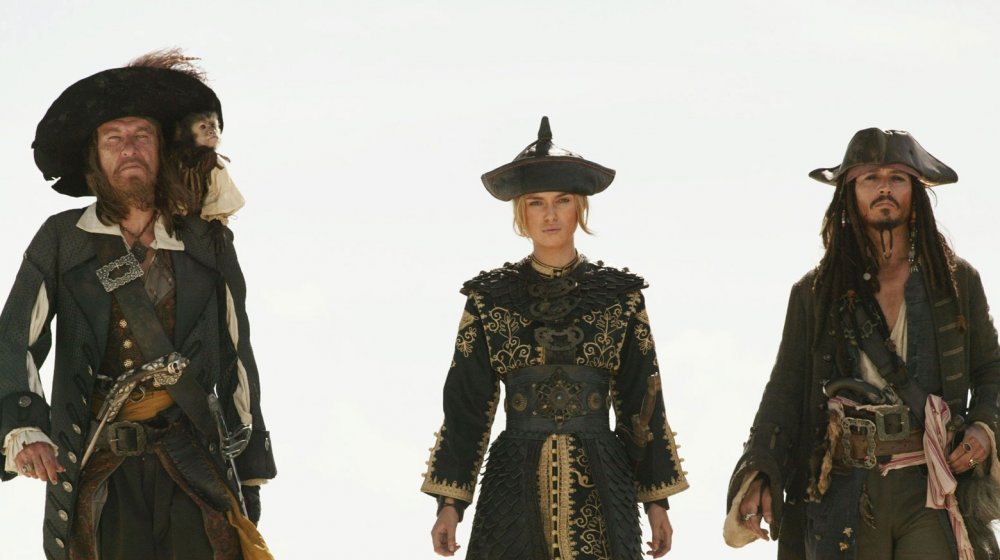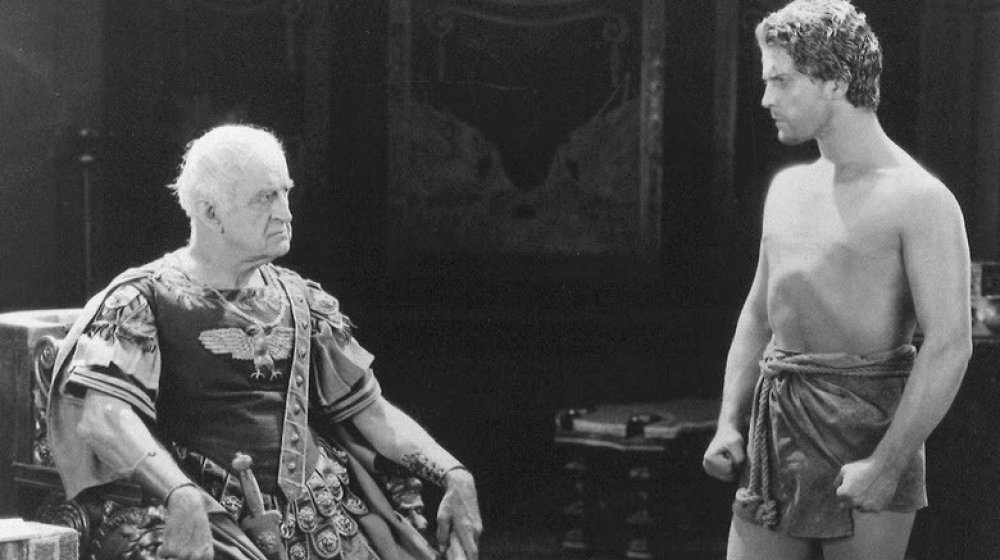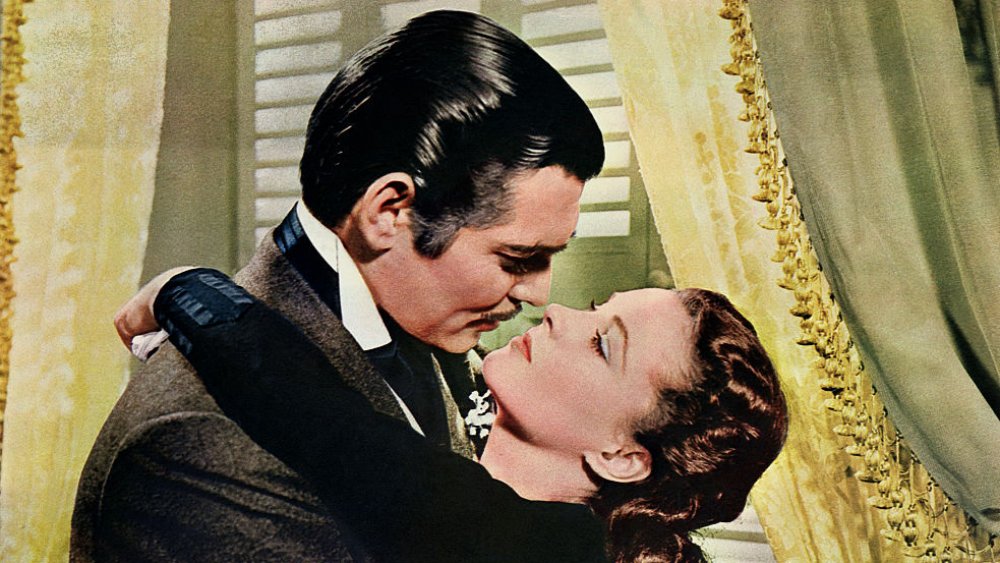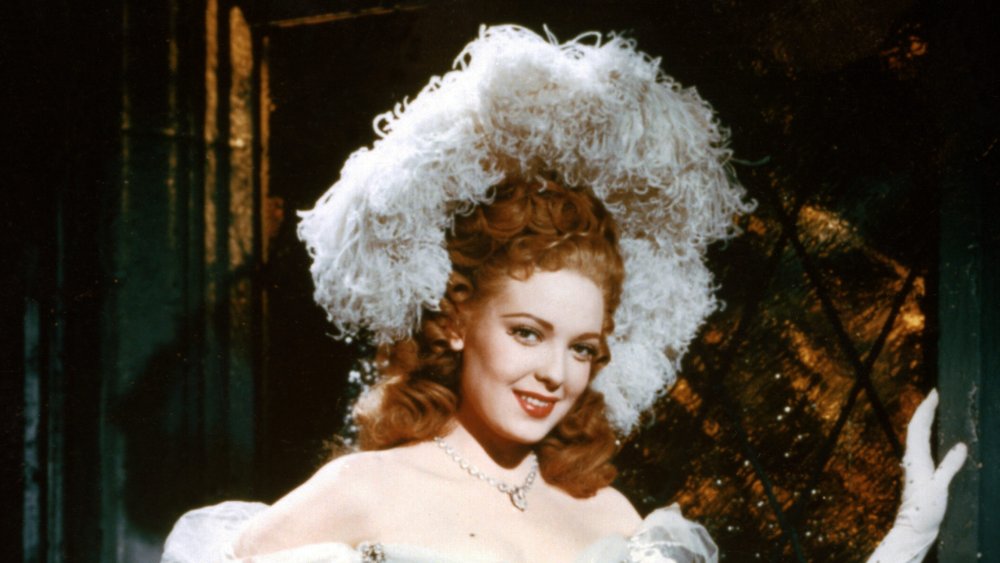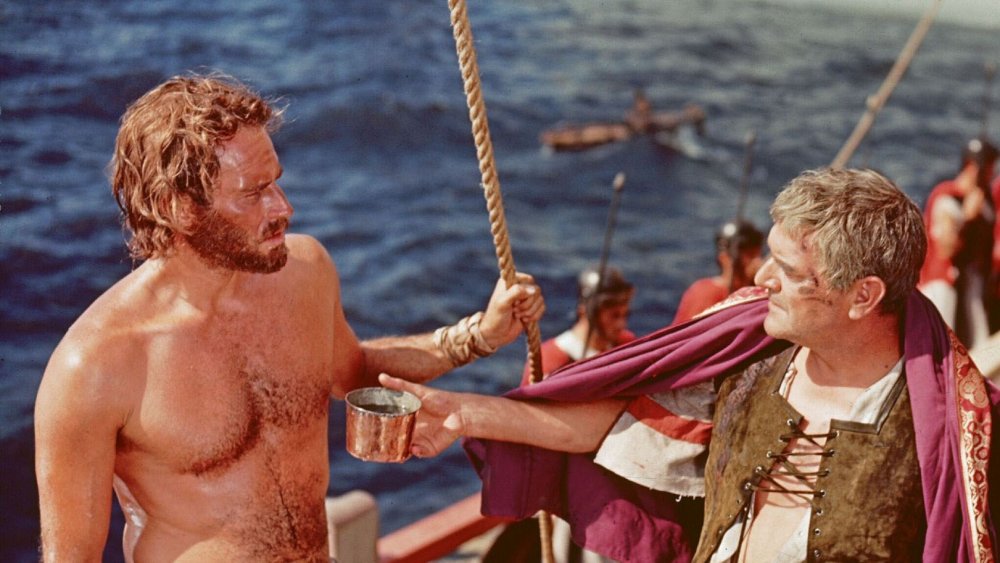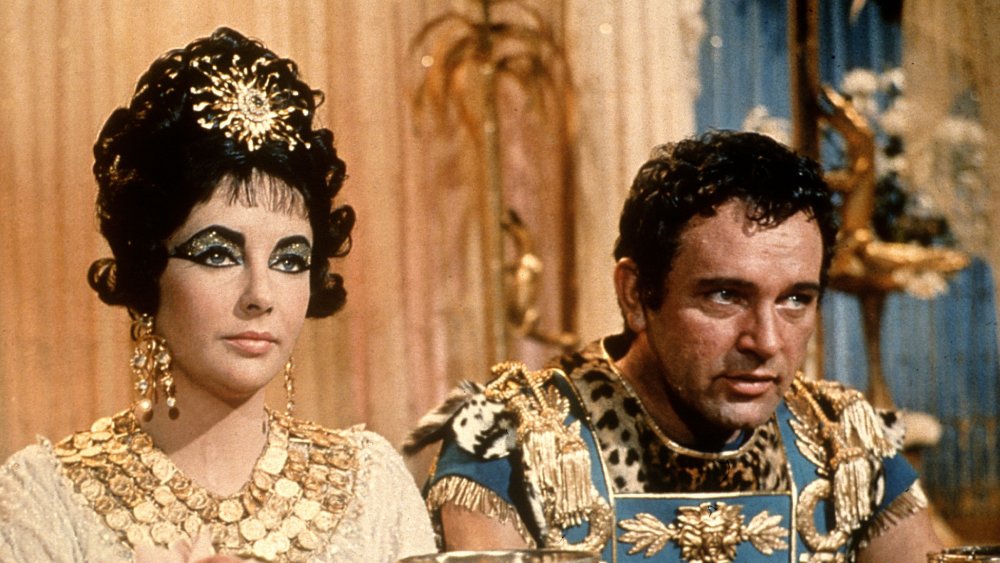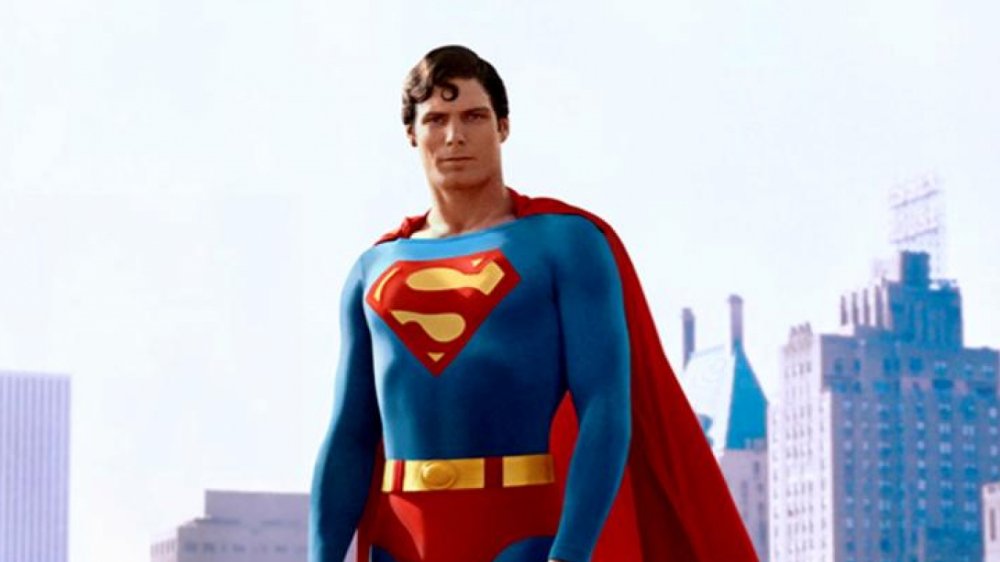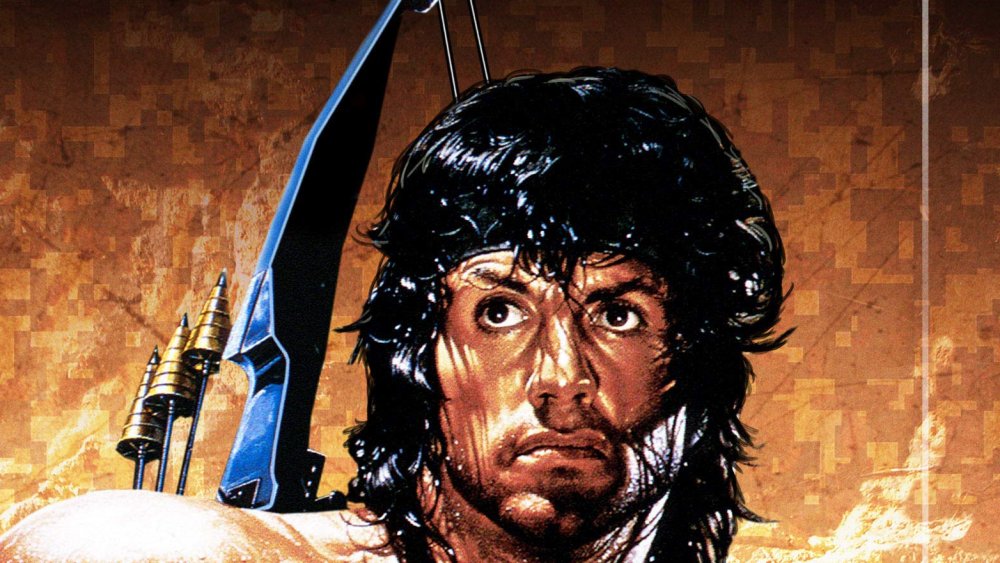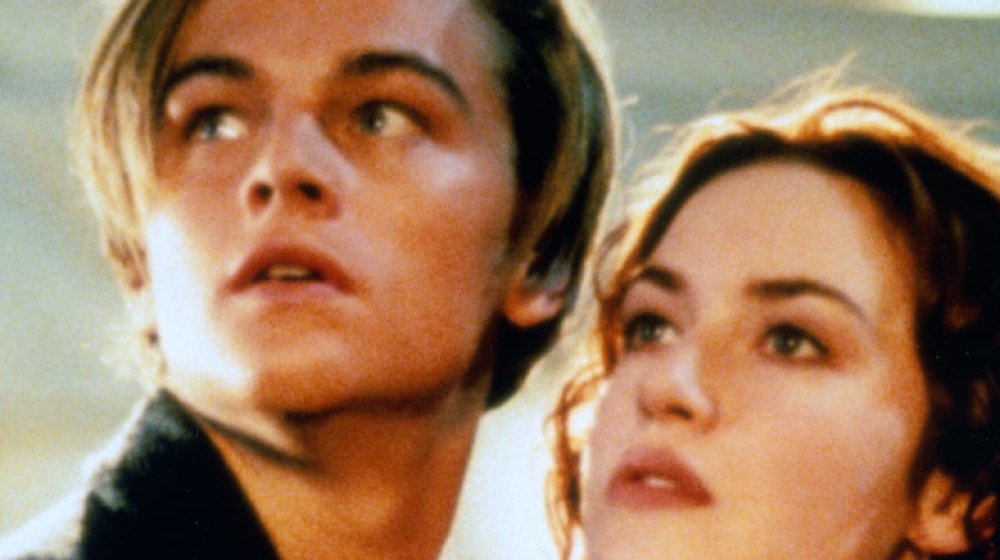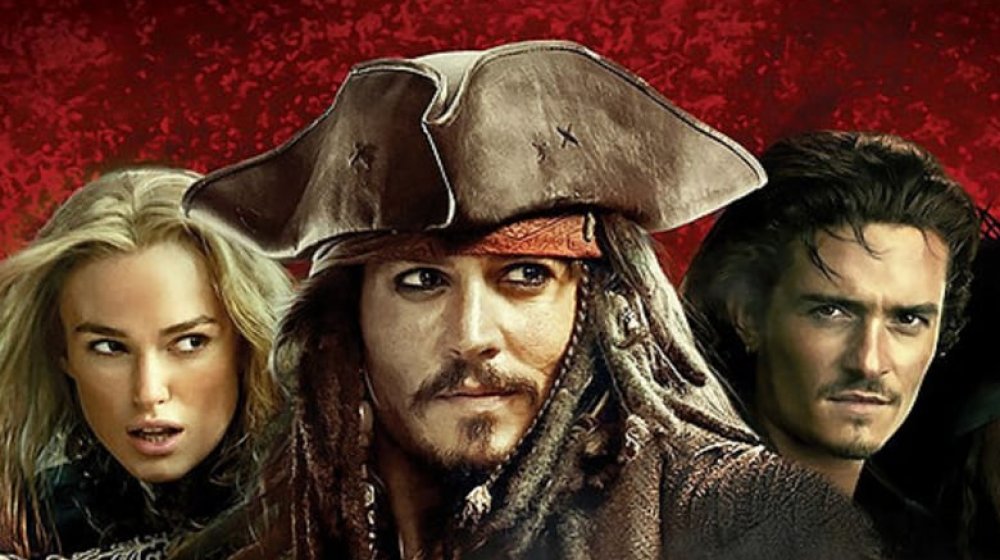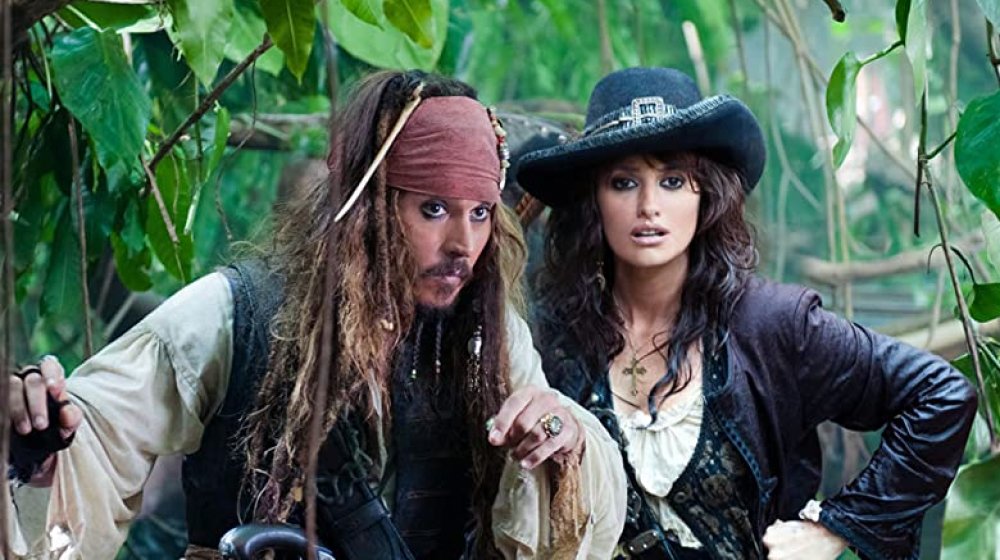The Most Expensive Movie Made In Every Decade
Back in 1997, it felt like an Earth-shattering event for Titanic to become the first-ever to cost more than $200 million. In 2020, it's an Earth-shattering event if a tentpole title doesn't cost $200+ million. In an attempt to stand out in a crowded modern film landscape, movie studios have entered into a kind of financial arms race, where everyone is trying to outdo the price tag of competing blockbusters. This means that everything from Battleship to The Lone Ranger receives a $200+ million budget. Even streaming services like Netflix are getting into the game by spending upwards of $200 million on upcoming films like The Gray Man.
Though big budget movies have become more common in the modern world, they're by no means exclusive to this era of Hollywood filmmaking. Since the dawn of cinema as an artform, Hollywood has been putting big bucks into productions, in order to produce the kind of lavish spectacle that gets the attention of moviegoers. This practice has been evident from the earliest days of Gone With the Wind, all the way up to modern-day blockbusters. To get the clearest possible idea of how Hollywood has always embraced expensive movies, let's run down the most expensive movie of each decade from the last century.
This story begins in the 1920s, which featured a remake that would help establish how much Hollywood loves expensive crowd-pleasers.
1920s: Ben-Hur: A Tale of the Christ ($3.67 million)
Using the 1880 novel Ben-Hur A Tale of the Christ as source material, the saga of Ben-Hur has been a constant part of cinema ever since the artform was created. After all, the very first film adaptation of this story emerged as early in 1907. However, it wasn't until the 1925 motion picture entitled Ben-Hur: A Tale of the Christ that this yarn would be adapted for the screen in a feature-length narrative. The lavish nature of this project was reflected in everything from its 143-minute runtime to its expansive set pieces, and especially in its budget.
"With a budget of nearly $4 million, Ben-Hur was the most expensive film of the silent era," notes Britannica. Such a budget wasn't common in this time period, but it was necessary for the film's visual novelties, such as the chariot race sequences, as well as filming select portions of Ben-Hur in two-strip Technicolor. After its expensive production, Ben-Hur ended up grossing $9 million (via The Numbers). Though initially a money-loser for MGM, Ben-Hur: A Tale of the Christ ended up having a lasting legacy for the studio that made it a long-term moneymaker. Said legacy included spawning numerous remakes, including one that was released as recently in 2016.
To boot, despite hailing from 1925, Ben-Hur: A Tale of the Christ established the mold of the expensive remake, that Hollywood is still emulating to this day.
1930s: Gone With the Wind ($4 million)
In June 1938, The New York Times announced that a feature film adaptation of the Margaret Mitchell novel Gone With the Wind was officially ready to start filming. In their news piece, the publication mentioned that purchasing the film rights for Gone With the Wind cost a "reputed $50,000. Since then an additional $250,000 expense has been incurred in preparation and tests. It is expected that the total budget will approach $1,500,000."
Eventually, Gone With the Wind would cost far more than $1.5 million. A tumultuous production ensued for the film, which included no less than three different directors (including George Cukor and Victor Fleming) being tasked with bringing Gone With the Wind to life. Eventually, when production wrapped, the budget had inflated to almost $4 million, according to The Numbers. Gone With the Wind was always expected to be a massive undertaking but nobody expected it to be this daunting of an endeavor.
Of course, the fact that Gone With the Wind is still so well-known 80 years after its release makes it apparent that the expensive production paid off divinely. Across its various domestic box office releases, Gone With the Wind has grossed $198 million (via The Numbers) while, when adjusted for inflation, it's still the highest-grossing movie of all-time.
1940s: Forever Amber ($6.375 million)
"The early years of the 40s decade were not promising for the American film industry, especially following the late 1941 attack on Pearl Harbor by the Japanese, and the resultant loss of foreign markets," wrote Tim Drake for Film.org. The financial impact of World War II means that, for much of the decade, there wasn't enough of an international box office market to justify the costs of producing epic Hollywood productions in the mold of Gone With the Wind.
However, in 1947, two years after World War II came to a close, director Otto Preminger delivered Forever Amber. Here was a movie whose massive budget was very much in the tradition of pre-World War II epics. It wasn't always set to cost so much, though. Originally moving forward in 1946 with a budget of $3,000,000, the film went through a messy production cycle — including the replacement of lead actress Peggy Cummins, as the Independent writes, two months into the process — leading to an exorbitant final cost of $6,000,000. In the wake of that nightmarish production cycle, Forever Amber grossed $8 million domestically in its initial 1947 theatrical release, according to Variety. That made it the fourth-biggest movie of 1947 domestically. However, $8 million wasn't nearly enough to make Forever Amber profitable.
With strike-outs like Forever Amber, it's easy to see why Hollywood avoided big-budget undertakings throughout the 1940s.
1950s: Ben-Hur ($15.175 million)
And here, Ben-Hur returns. This time, though, he has manifested in the form of a 1959 remake headlined by Charlton Heston. Much like the earlier take on the same material, William Wyler's 1959 Ben-Hur production was always intended to be an epic undertaking. "Even before the start of principal photography, the production was touted in news items as the costliest film ever made, with pre-production budget estimates ranging from a low end of $5,000,000 in 1953 to $13,000,000 by Jul 1958," notes AFI. Eventually, Ben-Hur ran up a $15 million pricetag, triple the lowest initial budget estimates. It would also carry more than four times the budget of the earlier Ben-Hur movie from 1925.
Such a budget was made possible by the sort of excess that defined the mid-20th-century American epic. "The film's famous chariot race scene alone took three weeks to shoot and used some 15,000 extras," reports History. Meanwhile, "Filming required the use of six $100,000 cameras that shot in 65mm [...]Thousands of extras were required over the course of the production, each of whom had to be dressed in costumes made specifically for the production. The chariot race set alone, which covered over eighteen acres, was five stories high and took six months to build, was reportedly the largest set built to that time," AFI further observes. Ben-Hur did not come cheap, but moviegoers ensured it was all money well spent, by giving this remake a colossal $73 million domestic gross (The Numbers).
1960s: Cleopatra ($44 million)
Over the course of film history, movies with big budgets are a dime-a-dozen, as are big-budget movies with chaotic productions. However, Cleopatra was no ordinary expensive production, chaotic or otherwise. This film's out-of-control costs have become the stuff of legends.
The movie started with a budget of $5 million, but that price tag would quickly increase once original director Rouben Mamoulian was fired after four months of production. Even with a new director on hand, the behind-the-scenes drama on Cleopatra failed to cease. This turmoil "included Elizabeth Taylor's near-fatal illness and the film's subsequent relocation to Rome's gigantic Cinecitta Studios," per The Guardian. Toss onto that Taylor and Richard Burton developing a romance during filming, and Cleopatra generated a lot of attention before it even hit the screen. When the dust settled, the budget had come to $44 million. Despite all the chaos, Cleopatra did manage to become a box office success. However, the troubled production had become so costly that even impressive box office figures couldn't provide Cleopatra with a happy ending. "Cleopatra was the biggest box office success of 1963. It earned nearly $58 million—or, adjusted for inflation, about $484 million. It also lost money, at least until Fox sold the TV rights years later," reflected The A.V. Club.
Every step of its journey, Cleopatra, the most expensive movie of the 1960s, proved to be a fascinating train wreck.
1970s: Superman ($55 million)
In 2020, it's normal for superhero movies to be given mammoth budgets. An average Marvel Cinematic Universe movie can rake up costs in excess of $300 million, while even an Ant-Man sequel can run up a $162 million price tag, according to Variety. Back in the seventies, though, big budget comic book movies weren't just rare: Superheroes, themselves, were largely absent from the cinematic landscape. The thought of spending $55 million on a project like Superman: The Movie was a fresh concept.
As it turned out, every penny would be necessary to bring this beloved character to the big screen. For one thing, there was the salaries for the movies big-name actors. Marlon Brando, for one, earned $3.7 million for just 13 days of working on the set, according to Variety, and the visual effects techniques used to make Superman fly, as well as behind-the-scenes turmoil between the film's producers and director, further ballooned the budget. Eventually, Warner Brothers — who originally only intended to be the distributor — flew in and got involved, according to Maclean.
Despite the out-of-control budget, Superman: The Movie ended up receiving the kind of gargantuan box office that most superhero films receive today. Amassing $300.5 million worldwide, according to The Numbers, Superman did nearly four times its budget, spurring the creation of three sequels. It also established the mold for all superhero blockbusters — a mold which is still omnipresent in 2020.
1980s: Rambo III ($63 million)
When the first Rambo movie, First Blood, was released in 1982, it was a relatively low budget affair with a $15 million price tag. That changed considerably by the time Rambo III rolled around, though it wasn't always the plan for the film to be such a costly endeavor. Initially, it was "budgeted at $31 million", according to the Los Angeles Times. That figure would eventually double to a whopping $69 million, making it (back then) the most expensive movie ever filmed. Where did all the money go? Partially to leading man Sylvester Stallone. "Stallone himself doesn't have to worry about his pocketbook," the Washington Post wrote in 1989 on Rambo III's box office prospects in May 1988. "Since he already has received an estimated $20 million for his input."
Further increasing the budget was turmoil on the set, chronicled by the Los Angeles Times, which included the loss of the films original director, Russell Mulcahy.
Despite carrying an unprecedented budget, Rambo III did manage to triple its costs with an almost $189 million worldwide box office haul, via The Numbers. Still, that was a 37% drop from the box office gross of the previous Rambo film. from three years prior. A massive budget couldn't take the Rambo franchise to new worldwide box office highs.
1990s: Titanic ($200 million)
Today, Titanic is a widely-beloved movie known for being the highest-grossing movie of all-time at the box office for over a decade. However, prior to its December 1997 release, Titanic was a movie plagued by toxic buzz. Much of this came from its escalating budget, which was originally set at $100 million. However, per Variety, as the production went on, "there was much handwringing when Titanic doubled its budget to hit the $200 million mark." That made Titanic the first movie in history to cost over $200 million (not adjusting for inflation).
How did the production get so pricey? "The shooting schedule, which started out at 138 days, mushroomed to 160 days – almost six solid months," according to the Independent. Meanwhile, a Hollywood Reporter piece looked back on the costly means used to bring the titular ship to life, pointing out the sheer number of construction workers hired to create a ship almost the size of the original, titular one. A Vanity Fair retrospective on the film noted that "in describing the production in a recent interview, former Fox studio exec Peter Chernin kept returning to one word: 'hell.'"
The "hellish" turmoil eventually became so great that Titanic doubled its initial $100 million budget. Of course, once Titanic was released in December 1997, all the production problems became a distant memory. Grossing over $1.8 billion in its initial theatrical release, as recorded by The Numbers, Titanic was a monstrous enough hit to justify its budget.
2000s: Pirates of the Caribbean: At World's End ($300 million)
A brief trend in the 2000s saw big blockbuster franchises taking a cue from the Lord of the Rings movies and shooting their sequels back-to-back. One series that went down this route were the first two Pirates of the Caribbean sequels, which included Pirates of the Caribbean: At World's End. This 2007 entry in the Pirates saga ended up being the more expensive of the two initial follow-ups, with a $300 million budget. At the time, that made it the most expensive film in history, without taking into account inflation.
Jack Sparrow and company ended up ringing such a massive budget "because of rising location, special effects, and star costs," per USA Today. A lightning-fast post-production period didn't help either. Whereas Dead Man's Chest finished filming ten months prior to its July 2006 debut, At World's End finished filming just five months before its May 2007 premiere, according to the production notes. When asked if putting together At World's End was "hectic", director Gore Verbinski told MovieWeb "Hectic? How about insane?"
Despite its historic price tag and "insane" production, At World's End managed to justify its exorbitant cost with a $961 million worldwide box office haul, via The Numbers. That made it the biggest movie of 2007 at the worldwide box office, and At World's End still holds the record for the largest three-day weekend gross over Memorial Day.
2010s: Pirates of the Caribbean: On Stranger Tides ($378 million)
After the ballooning budgets of the last two Pirates of the Caribbean movies, Disney was determined to keep the fourth installment in the franchise, On Stranger Tides, on a much tighter financial leash. In May 2010, the Los Angeles Times even used the budget of On Stranger Tides as an example of Hollywood making films on less lavish budgets in response to the then-new global recession of 2008: "Although it's still large — north of $200 million — it is at least a third less than the last Pirates movie and includes far fewer shooting days and visual effects shots." In May 2011, just before its theatrical premiere, Variety noted that On Stranger Tides was "budgeted at a reported $150 million." A few days later, Deadline reported that "Pirates 4 cost in the neighborhood of $250 million to make".
Both assessments would turn out to be incorrect.
In July 2014, Forbes reported that the actual production cost for On Stranger Tides was $410.6 million. This makes On Strange Tides not only the most expensive Pirates movie, and the highest-budgeted movie of the 2010s: it's also the most expensive movie of all-time. Even adjusting things for inflation, On Stranger Tides would still be the most costly film production in history. So, while Disney set sail with On Stranger Tides in hopes of making a cost-effective Pirates movie, in the end, they spent more booty than any other movie in history.
